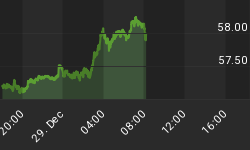The U.S. dollar should increase further against the Canadian dollar supported by favourable economic and seasonal conditions.
Canada is losing competitiveness?
As the economic growth is fading and commodities are receding from the highs, the U.S. dollar maintains a competitive advantage over the Canadian dollar, whose destiny is linked to the price of raw materials. In 2012, the greenback can rise to 1.05/1.08 against the loonie.
Let us see why.
The economic conditions have improved in U.S. Unemployment has declined to 8.50%, household spending has increased. Hiring in the construction business moved up by 17,000 units for the first time in years.
In Canada, at the contrary, employment fell for the first time since 2009, while the jobless-rate rose to 7.50%. Overall spending is still healthy. Auto sales rose 1.8% last year and holiday deals were encouraging. Finally, preliminary home sales might be up 4% from 2010. However, consumer confidence has declined to the lowest level in 16 years. Retail sales rose 4%, while they jumped 8% in the United States.
The economic growth is contracting.
Why? Simply, the economy might not be trending anymore. In 2011, the savings rate fell below 4% from 4.8%. Companies are prudent about hiring, after many months of negative news about the economic conditions in the U.S., Europe and China. In December, employment added 17,500 positions, but most of the gains were registered in the part-time or self-employment jobs. In the U.S., the manufacturing industry has played an important role in job gains. Labour cost has decreased and union influence is weak. As a result, productivity has surged. In Canada, at the contrary, the struggle between unions and private companies over wages and benefits is just beginning. Faster growth is at risk. In 2012, the Gross Domestic Product (G.D.P.) is expected to increase around 2.0% compared to 2.5% in the U.S.
Seasonal and technical conditions support a rise of the U.S. dollar as well. The first two months of the year are negative for the Canadian dollar. Then, the price is once again above the 50 days MA. Last, the trend is supported by a strong divergence between the RSI and price on the weekly chart. Over the longer-term, nonetheless, a new increase of the commodity prices should take the loonie near parity again.
















